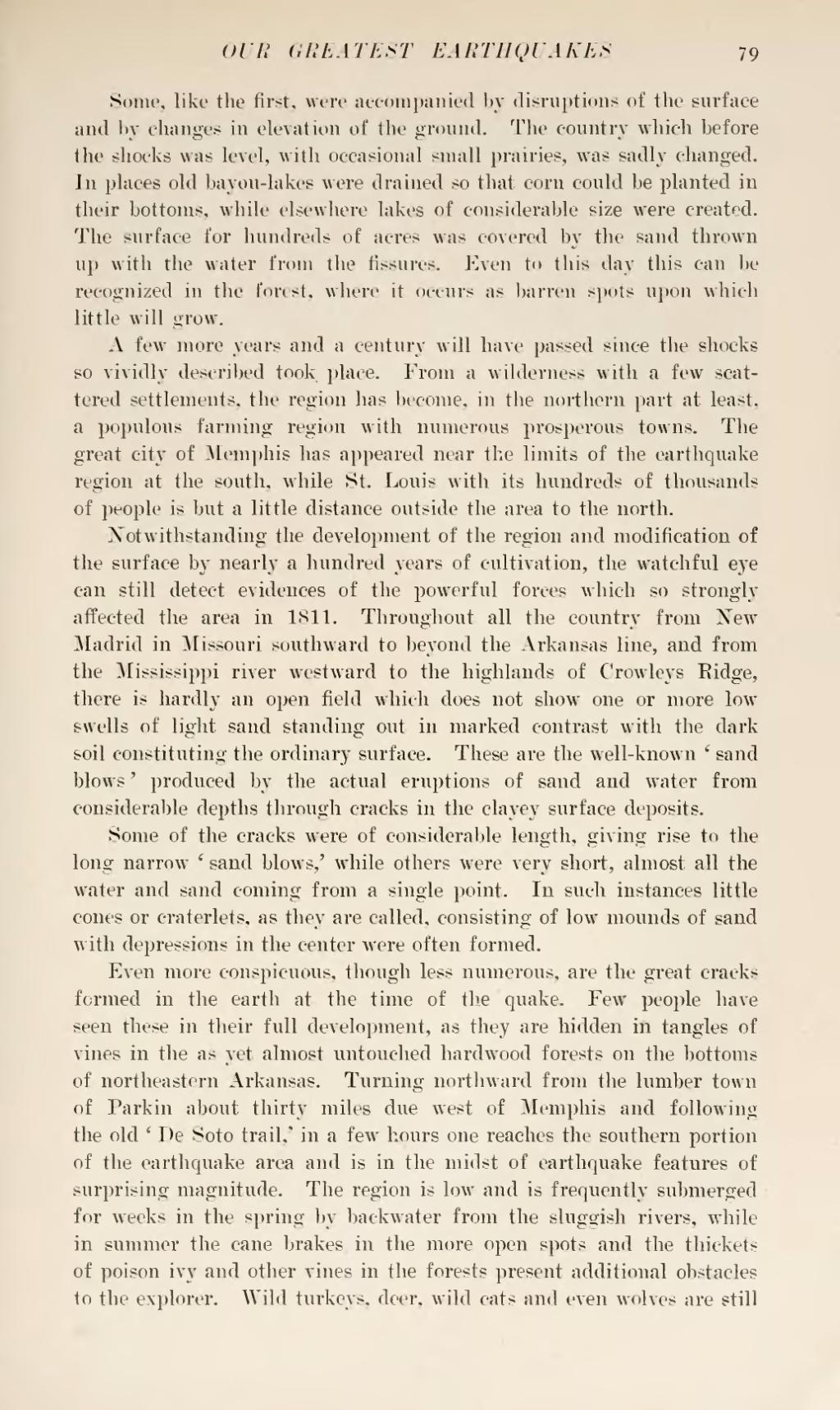Some, like the first, were accompanied by disruptions of the surface and by changes in elevation of the ground. The country which before the shocks was level, with occasional small prairies, was sadly changed. In places old bayou-lakes were drained so that corn could be planted in their bottoms, while elsewhere lakes of considerable size were created. The surface for hundreds of acres was covered by the sand thrown up with the water from the fissures. Even to this day this can be recognized in the forest, where it occurs as barren spots upon which little will grow.
A few more years and a century will have passed since the shocks so vividly described took place. From a wilderness with a few scattered settlements, the region has become, in the northern part at least. a populous farming region with numerous prosperous towns. The great city of Memphis has appeared near the limits of the earthquake region at the south, while St. Louis with its hundreds of thousands of people is but a little distance outside the area to the north.
Notwithstanding the development of the region and modification of the surface by nearly a hundred years of cultivation, the watchful eye can still detect evidences of the powerful forces which so strongly affected the area in 1811. Throughout all the country from New Madrid in Missouri southward to beyond the Arkansas line, and from the Mississippi river westward to the highlands of Crowleys Ridge, there is hardly an open field which does not show one or more low swells of light sand standing out in marked contrast with the dark soil constituting the ordinary surface. These are the well-known 'sand blows' produced by the actual eruptions of sand and water from considerable depths through cracks in the clayey surface deposits.
Some of the cracks were of considerable length, giving rise to the long narrow 'sand blows' while others were very short, almost all the water and sand coming from a single point. In such instances little cones or craterlets, as they are called, consisting of low mounds of sand with depressions in the center were often formed.
Even more conspicuous, though less numerous, are the great cracks formed in the earth at the time of the quake. Few people have seen these in their full development, as they are hidden in tangles of vines in the as yet almost untouched hardwood forests on the bottoms of northeastern Arkansas. Turning northward from the lumber town of Parkin about thirty miles due west of Memphis and following the old 'De Soto trail' in a few hours one reaches the southern portion of the earthquake area and is in the midst of earthquake features of surprising magnitude. The region is low and is frequently submerged for weeks in the spring by backwater from the sluggish rivers, while in summer the cane brakes in the more open spots and the thickets of poison ivy and other vines in the forests present additional obstacles to the explorer. Wild turkeys, deer, wild cats and even wolves are still
